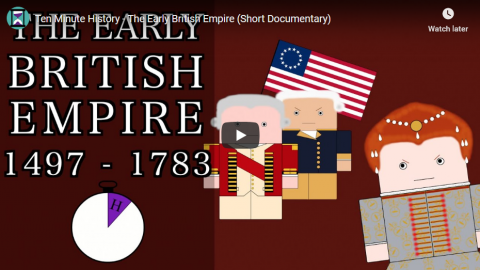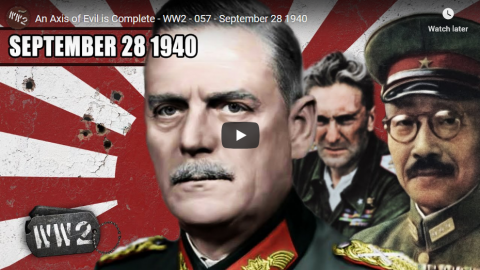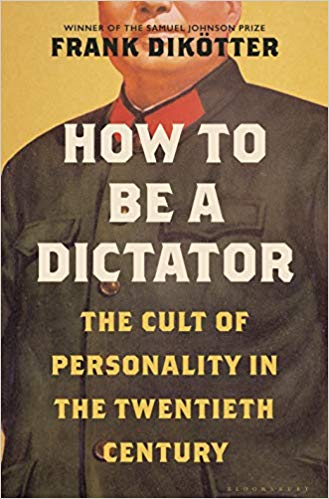Matt Estlea
Published 28 Sep 2019In this video, I show you how to accurately flatten, thickness, and square the lid to fit perfectly on the top of the box. All of the supporting resources for this project are listed below:
How to Flatten and Square wood:
https://www.youtube.com/watch?v=C4aim…How to Sharpen a Plane:
https://www.youtube.com/watch?v=vtCAb…How to Setup a Plane:
https://www.youtube.com/watch?v=J0ZV8…How to Use a Plane:
https://www.youtube.com/watch?v=MVGvR…
_________________________________________________________________Buy Wonder Dogs/Pups here:
http://bit.ly/2lMCXh6You may also need these:
http://bit.ly/2lOMvrP
_________________________________________________________________Support what I do by becoming a Patron! This will help fund new tools, equipment and cover my overheads. Meaning I can continue to bring you regular, high quality, free content. Thank you so much for your support! https://www.patreon.com/mattestlea
Don’t want to commit to a monthly direct debit but still want to help out? That’s fine!
You can make a one time donation here: https://www.paypal.me/MattEstlea
You can donate us biscuits here: https://amzn.to/2WOl1UR
_________________________________________________________________
BUY THE WOODWORKING BIBLE HERE:
– UK: https://goo.gl/X8ZzSF
– US: https://goo.gl/UDqWf3
– CA: https://goo.gl/31jBxj
_________________________________________________________________See what tools I use here: https://kit.com/MattEstlea
My Website: http://www.mattestlea.com
_________________________________________________________________My name is Matt Estlea, I’m a 23 year old Woodworker from Basingstoke in England and my aim is to make your woodworking less s***.
I come from 5 years tuition at Rycotewood Furniture Centre with a further 1 year working as an Artist in Residence at the Sylva Foundation. I now teach City and Guilds Furniture Making at Rycotewood as of September 2018.
I also had 5 years of experience working at Axminster Tools and Machinery where I helped customers with purchasing tools, demonstrated in stores and events, and gained extensive knowledge about a variety of tools and brands.
During the week, I film woodworking projects, tutorials, reviews and a viewer favourite ‘Tool Duel’ where I compare two competitive manufacturers tools against one another to find out which is best.
I like to have a laugh and my videos are quite fast paced BUT you will learn a lot, I assure you.
Lets go make a mess.
September 30, 2019
Flattening and Fitting the Lid | Dovetail Box Project #12 | Free Online Woodworking School
Minnesota Vikings unable to handle the Chicago Bears at Soldier field, losing 16-6
 The visiting Minnesota Vikings wore their usual purple uniforms, as the Bears broke out one of their (many possible) throwback uniforms for Sunday’s NFC North match-up at Soldier Field. The inactive lists for both teams included valuable players not available for the game — starting right guard Josh Kline for the Vikings and defensive tackle Akiem Hicks and linebacker Roquan Smith for the Bears, who missed the game for personal reasons. Despite missing starters, the Chicago defence kept the Vikings off-balance and away from the end zone until a garbage time touchdown by Dalvin Cook saved Minnesota from their first shut-out in more than a decade. The Vikings offensive line couldn’t keep quarterback Kirk Cousins clean and he was sacked six times.
The visiting Minnesota Vikings wore their usual purple uniforms, as the Bears broke out one of their (many possible) throwback uniforms for Sunday’s NFC North match-up at Soldier Field. The inactive lists for both teams included valuable players not available for the game — starting right guard Josh Kline for the Vikings and defensive tackle Akiem Hicks and linebacker Roquan Smith for the Bears, who missed the game for personal reasons. Despite missing starters, the Chicago defence kept the Vikings off-balance and away from the end zone until a garbage time touchdown by Dalvin Cook saved Minnesota from their first shut-out in more than a decade. The Vikings offensive line couldn’t keep quarterback Kirk Cousins clean and he was sacked six times.

“Soldier Field 4” by afagen is licensed under CC BY-NC-SA 2.0
The Vikings’ running game disappeared Sunday at Soldier Field, and so did the rest of their offense.
The Chicago Bears, despite being down five starters to start the game and then losing quarterback Mitchell Trubisky on the first series, easily defeated Minnesota 16-6.
The Vikings got a 2-yard touchdown run by Dalvin Cook with 2:58 left to avoid their first shutout since losing 34-0 at Green Bay on Nov. 11, 2007.
The Vikings have had plenty of struggles in Chicago, but few have been worse than this one. The Bears, with backup quarterback Chase Daniel and a rugged defense leading the way, outgained Minnesota 249 yards to 64 in first three quarters. The Vikings piled up some late yards to make the final margin 269-222.
The Vikings, who entered the game second in the NFL with an average of 193.7 yards rushing, were held to just 40 yards on the ground. Cook, who came in leading the NFL with 375 yards rushing, was held to just 35 yards on 14 carries.
The Vikings dropped to 2-2, denying them a chance to tie Green Bay (3-1) for the NFC North lead. Instead, the Bears (3-1) have moved into a tie for the lead.
On the game’s sixth play, Trubisky was knocked out of the game with a left shoulder injury after he was sacked by Danielle Hunter and lost a fumble that was recovered by Minnesota’s Everson Griffen. However, the turnover was wiped out because of defensive holding on Vikings safety Anthony Harris.
No one who is employed by the Minnesota Vikings, or a fan of the team, should put any stock in the team’s two victories this season. Atlanta and Oakland are bad football teams that fell apart in the din of U.S. Bank Stadium. The Vikings’ two losses? Those have been very instructive when it comes to judging this team and right now the judgment of Mike Zimmer’s collection is not kind.
Two weeks after blowing a road game that the Green Bay Packers begged them to take, the Vikings traveled to Soldier Field on Sunday for another NFC North game with a chance to make a statement about themselves. They departed with a 16-6 defeat that came with Chicago missing three key players on defense and quarterback Mitch Tribusky having left on the sixth play of the day because of an injury to his left shoulder.
It was both an underwhelming and sorry-looking performance that will leave many wondering if general manager Rick Spielman and coach Mike Zimmer will be allowed to stick around after this season and also might call for Zimmer to do some of his best work since he took over as the Vikings coach in 2014.
We aren’t talking about the on-the-field stuff either. If it hasn’t started to happen already, Zimmer is about to be faced with a room full of very competitive guys wondering why the Vikings aren’t winning very-winnable games and why they aren’t being used in a more constructive fashion.
Ted Glover‘s Buy and Sell recommendations from his post-game Stock Market Report:
Buy: Everson Griffen fumble recovery on Chicago’s initial drive. The Vikings needed to start out fast today, and on the first drive of the game it looked like they might do just that. Bears QB Mitchell Trubisky rolled out to his left, got caught from behind by Danielle Hunter, who sacked Trubisky while causing him to fumble. Everson Griffen picked it up and was forced out of bounds at the Bears 32. Trubisky was helped off the field, and was knocked out of the game.
Sell: Defensive holding that negated the Everson Griffen fumble recovery. But it was all for naught. Anthony harris was called for defensive holding, giving the bears an automatic first down. So instead of the Vikings knocking out the starting QB and getting the ball in Bears territory, Chicago goes on a 14 play, 75 yard touchdown drive that eats up over 8 minutes of the first quarter, engineered by backup QB Chase Daniel. The drive ended with a Daniel to Tarik Cohen touchdown.
Buy: The theory of deferring. If you win the toss and defer, you are playing the odds of putting our stronger unit out on the field first, hopefully getting a lead at halftime, and then getting the ball to open the second half. If you have a strong defense, it’s a good theory.
Sell: Deferring. This theory sucks for the Vikings, at least against good teams. Against the Packers, Green Bay went 75 yards in a mere four plays. Against the Bears, Chicago … using their second string QB, mind you … went 75 yards in 15 plays, eating up more than half the time off the clock in the first quarter. Their second drive went 16 plays, for 72 yards, and the Bears kicked a field goal. Half over. But, wait, the Vikes get the ball to start the third quarter, and a good drive that ends in a TD to open the half, and we have a brand new ballgame. Yeah, Cousins fumbled on the first play, the Bears recovered, and the game was essentially over.
Buy: CJ Ham. I really like C.J. Ham. I think he’s a good fullback, and does his job well.
Sell: CJ Ham as primary targeted receiver over Stefon Diggs and Adam Thielen. I don’t like him as the main guy targeted by the quarterback while meaningful football is being played, though. Call me crazy that way.
Fullback CJ Ham has been targetted four times so far — more than Stefon Diggs (2) and Adam Thielen (1) combined.
— Chad Graff (@ChadGraff) September 29, 2019
Ten Minute History – The Early British Empire
History Matters
Published on 26 Sep 2016Twitter: https://twitter.com/Tenminhistory
Patreon: https://www.patreon.com/user?u=4973164This episode of Ten Minute History (like a documentary, only shorter) covers the birth and rise of the British Empire from the reign of Henry VII all the way to the American Revolution. The first part deals with the Tudors and their response to empire in Spain (as well as the Spanish Armada). The second part deals with England’s (and later Britain’s) establishment of its own empire in North America and India. It then concludes with the Seven Years’ War and the American Revolution.
Ten Minute History is a series of short, ten minute animated narrative documentaries that are designed as revision refreshers or simple introductions to a topic. Please note that these are not meant to be comprehensive and there’s a lot of stuff I couldn’t fit into the episodes that I would have liked to. Thank you for watching, though, it’s always appreciated.
QotD: Oil price volatility
Why is the price of oil so volatile? I thought I knew the answer — scarcity and OPEC — till I read Aguilera and Radetzki. They make the case that depletion has never been much of a factor in driving oil prices, despite the obvious drying up of certain fields (such as the North Sea today). Nor did OPEC’s interventions to fix prices make much difference over the long run. What caused the price of oil to rise much faster than other commodities, though erratically and with crashes, they argue, was the result of one factor in particular.
There was a wave of nationalisation in the oil industry beginning in the 1960s. Today some 90 per cent of oil reserves are held by nationalised companies. ExxonMobil and BP are minnows compared with the whales owned by the governments of Saudi Arabia, Venezuela, Iran, Iraq, Kuwait, the United Arab Emirates, Nigeria and Russia. Post-colonial nationalisation affected many resource-based industries, but whereas many mineral and metal companies were privatised in the 1990s as their grotesque inefficiencies became visible, the same has not happened to state oil companies.
The consequence is that most oil is produced by companies that are milked by politicians, and consequently starved of cash (or incentives) for innovation and productivity. Lamenting “politicians’ extraordinary ability to mess things up”, the two authors note “the severely destructive role that can be played by political fights over the oil rent and its use”.
If politicians don’t get in the way, and we have two decades of relatively cheap oil it will be bad news for petro-dictators, oil-igarchs, ISIS thugs, and the promoters of wind power, solar power, nuclear energy and electric cars. But it is good news for everybody else, especially those on modest incomes.
Matt Ridley, “Low oil prices are a good thing”, The Rational Optimist, 2016-02-14.
September 29, 2019
An Axis of Evil is Complete – WW2 – 057 – September 28 1940
World War Two
Published 28 Sep 2019This week, the factions of World War Two begin to crystallise as the Japanese join the Axis powers.
Join us on Patreon: https://www.patreon.com/TimeGhostHistory
Or join The TimeGhost Army directly at: https://timeghost.tvFollow WW2 day by day on Instagram @World_war_two_realtime https://www.instagram.com/world_war_t…
Join our Discord Server: https://discord.gg/D6D2aYN.
Between 2 Wars: https://www.youtube.com/playlist?list…
Source list: http://bit.ly/WW2sourcesWritten and Hosted by: Indy Neidell
Produced and Directed by: Spartacus Olsson and Astrid Deinhard
Executive Producers: Bodo Rittenauer, Astrid Deinhard, Indy Neidell, Spartacus Olsson
Creative Producer: Joram Appel
Post-Production Director: Wieke Kapteijns
Research by: Indy Neidell
Edited by: Iryna Dulka
Map animations: EastoryColorisations by Norman Stewart and Julius Jääskeläinen https://www.facebook.com/JJcolorization/
Eastory’s channel: https://www.youtube.com/channel/UCEly…
Archive by Screenocean/Reuters https://www.screenocean.com.Sources:
– USHMM
1. Accession Number: 1992.252.1 | RG Number: RG-60.0621 | Film ID: 302
2. Photograph Number: 74565
– IMW:
IWM (A 1378)
IWM (A 1376)
IWM (CH 1429)
IWM (C 1819)TimeGhost chronological documentary produced by OnLion Entertainment GmbH.
History Summarized: Mexico
Overly Sarcastic Productions
Published 27 Sep 2019Go to https://NordVPN.com/overlysarcastic and use code OVERLYSARCASTIC to get 70% off a 3-year plan and an extra month for free. Protect yourself online today!
This video is quite serendipitous in timing — by complete coincidence, this is going live on September 27, the day of Mexico’s true political independence under the First Mexican Empire. This is the 11 year sequel to the more traditional Mexican Independence celebrations of September 16th, which marks Miguel Hidalgo’s proclamation of the “Cry of Dolores” and the start of the Mexican War of Independence. No joke, I only realized this when I was partway through researching the video. I do so much ancient history I’m not used to events having dates we can track to the day.
ANYWAY enjoy this look at Mexican History, here broken into three main acts, the Aztec Empire, the Colony of New Spain, and the Independent nation of Mexico.
“Santianna” By The Longest Johns: https://thelongestjohns.bandcamp.com/…
PATREON: https://www.Patreon.com/OSP
DISCORD: https://discord.gg/sS5K4R3
Being a dictator is a stressful vocation
Gustav Jönsson reviews a new book by Professor Frank Dikötter on twentieth-century dictators:
One of the first things to emerge from Professor Frank Dikötter’s eagerly awaited new book How to Be a Dictator is that it is a stressful vocation: there are rivals to assassinate, dissidents to silence, kickbacks to collect, and revolutions to suppress. Quite hard work. Even the most preeminent ones usually meet ignominious ends. Mussolini: summarily shot and strung upside down over a cheering crowd. Hitler: suicide and incineration. Ceausescu: executed outside a toilet block. Or consider the fate of Ethiopia’s Haile Selassie: rumoured to have been murdered on orders of his successor Mengistu Haile Mariam, he was buried underneath the latter’s office desk. Not the most alluring career trajectory, one might say.
Dikötter’s monograph is a study of twentieth century personality cults. He examines eight such cults: those created by Mussolini, Hitler, Stalin, Mao, Kim Il-sung, Duvalier, Ceausescu, and Mengistu. For them, cultism was not mere narcissism, it was what sustained their regimes; foregoing cultism, Dikötter argues, caused swift collapse. Consider Pol Pot and the Khmer Rouge. Cambodians were unsure of Pol Pot’s exact identity for years, even after he had assumed leadership of the country. The Khmer Rouge, meanwhile, was in its initial stages merely called “Angkar” — “The Organisation.” There was no inspiring iconography. There was no ritualised leader worship. There was only dark terror. Dikötter quotes historian Henri Locard: “Failing to induce adulation and submissiveness, the Angkar could only generate hatred.” The Khmer Rouge soon lost its grip on the country. Dikötter makes an obligatory reference: “Even Big Brother, in George Orwell’s 1984, had a face that stared out at people from every street corner.”
Readers of Orwell will remember that INGSOC has no state ideology. There is only what the Party says, which can change from hour to hour. Likewise, Dikötter argues, there was no ideological core to twentieth century dictatorships; there was only the whim of the dictator. Nazism, for example, was not a coherent creed. It contained antisemitism, nationalism, neo-paganism, etc., but its essence was captured in one of its slogans: The Führer is Always Right. That is what the creed amounted to. Indeed, the NSDAP referred to itself simply as “the Hitler movement.” Nazism was synonymous with Hitlerism. Italian Fascism was perhaps even more vacuous. The regime’s slogan was simple: Mussolini is Always Right. Explaining his method of politics, Mussolini said: “We do not believe in dogmatic programmes, in rigid schemes that should contain and defy the changing, uncertain, and complex reality.”
While it is uncontroversial to argue that Nazism and Fascism were without ideology, as Dikötter writes, the “issue is more complicated with communist regimes.” Naturally, Marxism was connected with Stalin, Mao, Ceausescu, Kim, and Mengistu. But Dikötter rightly says that it was Lenin’s revolutionary vanguard, not Marx’s philosophical works, that inspired them. Doctrines can be interpreted in contradictory ways, creating schismatic movements — as shown throughout the history of socialism. In this regard personality cults are far safer because they are substantively empty. Marxist dictators thus subverted Marxism. Engels had said that socialism in one country was impossible, but that is what Stalin’s Soviet Union favoured. Or consider Kim’s North Korea, which in 1972 replaced Marxism with Great Leader Thought. And as Dikötter writes, “Mao read Marx, but turned him on his head by making peasants rather than workers the spearhead of the revolution.” Reading Marx under Marxism, Dikötter says, was highly imprudent: “One was a Stalinist under Stalin, a Maoist under Mao, a Kimist under Kim.” In short, Marxism was whatever the dictator said, and not what Marx had actually written.
Walther KKW: Competition Shooting in Nazi Germany
Forgotten Weapons
Published on 14 Aug 2019RIA on YouTube: https://www.youtube.com/user/RockIsla…
RIA on Instagram: https://www.instagram.com/rockislanda…The KKW (“Klein Kaliber Wehrsportgewehr“, or small caliber military sporting rifle) was developed by BDW in 1937 as an amalgamation of various .22 rifle elements from other manufacturers as well as BSW itself. It was intended to fill the role of the German national standard target rifle. When the Nazi party took over Germany in the early 30s, the SA consolidated and reorganized the civilian shooting sports in to a format aimed at military training. To this end, they wanted a standardized rifle which would duplicate the handling of the Mauser K98k in .22 long rifle caliber. This was initially the DSM, but in 1935 the SA decided that it wanted a rifle that more closely mirrored the military pattern Mauser. The result was the KKW. For more information on these and other German 1930s/40s training rifles, I recommend the recent book on the subject by Bob Simpson.
http://www.patreon.com/ForgottenWeapons
Cool Forgotten Weapons merch! http://shop.bbtv.com/collections/forg…
Contact:
Forgotten Weapons
PO Box 87647
Tucson, AZ 85754
QotD: Crony capitalists and corrupt politicians love tariffs
Any survey – and certainly any careful study – of the history and reality of tariff policy confirms that tariffs (and other trade restrictions) are almost always dispensed, not for any plausible public-interest reasons, but to satisfy the private interests of rent-seekers. Even if, contrary to fact, economic journals and textbooks were filled with several plausible scenarios under which trade restrictions can improve the economic well-being of home-country residents, the actual history of trade policy is that this policy is one in service to domestic plunderers.
Many who agree with me here will nevertheless scold me for using, à la Bastiat, the provocative word “plunderers.” But I stick to my choice of words.
“Plunderers” is descriptive, for plunder is in fact what trade restrictions are all about. For two and a half centuries now we proponents of free trade have played mostly on the rhetorical turf of protectionists. On this turf there are language biases galore, such as “trade deficit,” a lowering of home-country tariffs described as “concessions” to foreign countries, the arrival in the home country of especially low-priced imports condemned as “dumping,” and, indeed, the word “protection” itself. Also, don’t forget the constant, clanking parade of inapposite military and sports metaphors.
For two and a half centuries now we proponents of free trade have typically treated the efforts of rent-seekers and rent-dispensers to portray their use of the state to enrich themselves at the expense of others with intellectual and moral respect. Why?
No one attempts to intellectually rationalize the theft and violence committed by street gangs. No one attempts to rationalize shoplifting, vandalism, armed robbery, arson, or rape. (It would, do note, be child’s play for a competent economics graduate student to develop a coherent theory of “optimal gang violence” that shows that, under just the right set of circumstances, there is an “optimal” amount of gang violence that improves the national welfare.) We call these destructive exercises of theft, coercion, and violence “theft,” “coercion,” and “violence.” We call these predatory activities what they really are.
By calling protectionism what it really is – the plunder of the many by the politically powerful few – we more vividly and widely expose protectionism’s ugly and cruel reality.
Don Boudreaux, “Quotation of the Day…”, Café Hayek, 2019-08-04.
September 28, 2019
The Freikorps Fights On – Estonia and Latvia War For Independence I THE GREAT WAR 1919
The Great War
Published 27 Sep 2019Support 16 Days in Berlin: https://realtimehistory.net/indiegogo
After the Battle of Cesis it seemed the situation in Latvia and Estonia was about to quieten down. But the German soldiers in the region and the ongoing conflict with Bolshevik Russia meant the 2nd half of 1919 saw even more fighting in the Baltics.
» SUPPORT THE CHANNEL
Patreon: https://www.patreon.com/thegreatwar
Merchandise: https://shop.spreadshirt.de/thegreatwar/»CREDITS
Presented by: Jesse Alexander
Written by: Jesse Alexander
Director: Toni Steller & Florian Wittig
Director of Photography: Toni Steller
Sound: Toni Steller
Editing: Toni Steller
Mixing, Mastering & Sound Design: http://above-zero.com
Maps: Daniel Kogosov (https://www.patreon.com/Zalezsky)
Research by: Jesse Alexander
Fact checking: Florian WittigChannel Design: Alexander Clark
Original Logo: David van StepholdA Mediakraft Networks Original Channel
Contains licensed material by getty images
All rights reserved – Real Time History GmbH 2019
Tank Convoy | Operation Market Garden 75 | The Tank Museum
The Tank Museum
Published 27 Sep 2019September 2019 marked the 75th Anniversary of Operation Market Garden. Here we see highlights of the XXX Corps armoured convoy reenactment which took place to commemorate this event. Find out how the Museum’s vehicles fared during the convoy.
Support the work of The Tank Museum on Patreon: ► https://www.patreon.com/tankmuseum
Visit The Tank Museum SHOP: ► https://tankmuseumshop.org/
Twitter: ► https://twitter.com/TankMuseum
Instagram: ► https://www.instagram.com/tankmuseum/
Tiger Tank Blog: ► http://blog.tiger-tank.com/
Tank 100 First World War Centenary Blog: ► http://tank100.com/
American politics as reality TV … maybe “reality” is a bit generous
At Catallaxy Files, John Comnenus guest-posts on The Trumpman Show of US politics:

Donald Trump addresses a rally in Nashville, TN in March 2017.
Photo released by the Office of the President of the United States via Wikimedia Commons.
Politics is reality television, especially American politics where a cast of a dozen contest the primaries. Like a good reality television show, there are set events and episodes, such as debates and primaries, where the weaker contestants are gradually knocked out until one emerges to fight the other side for the ultimate prize – the Presidency.
Reality television shows typically assemble a cast of mismatched characters who bond together and feud amongst each other over tasks that are assigned by the script writers and star. They inject challenges into the cast to create tension and drama that changes the cast’s allegiances and relationships in a way that engages the audience and leads to a cast member(s) being removed from the show.
Donald Trump produced and starred in the highly successful reality television show, The Apprentice, for 11 years. I believe Donald Trump is the first politician to conduct politics as if it were a reality television show. Rudolph Guliani claims the Ukraine story, which blew up this week, was a trap laid for the Democrats who walked straight into it. Trump knew the cast of Democrat Congressmen and Presidential candidates couldn’t resist the challenge Trump injected into the cast.
Succeeding in reality television is about timing that creates the drama that engages the audience and gradually removes cast members. So why inject this Ukraine story now? I suspect Trump injected this script item into the Democrat Party cast now to ensure that he dramatically realigns the cast’s relationships and allegiances as they go into primary season. He wants to do this by removing the front runner. If I am right, Trump wants a viciously divided Democratic Party Convention that can barely stand the nominee the Party selects as the Democratic challenger to Donald Trump.
The Ukraine trap effectively knocks Biden out of the race – he can’t go to a debate with highly credible and growing allegations of corruption swirling around him. The Democrat establishment will ensure he retires for “health reasons” to avoid Democrat corruption dominating the next debate. So the 20%-25% of Democrats who previously supported Biden will need to cast their lot with another candidate. But who?
How the Federal Reserve Works: After the Great Recession
Marginal Revolution University
Published on 3 Apr 2018In response to the Great Recession, the Federal Reserve has implemented some new instruments and policies – including quantitative easing, paying interest on reserves, and conducting repurchase (and reverse repurchase) agreements. In this video we cover how these tools work, and why they matter.
QotD: Ship availability in the Royal Navy
[T]he traditional metric of how a navy can deploy is that it requires a roughly 3:1 ratio to sustain a vessel on a task indefinitely — in very rough terms this means that when a ship is deployed on OP KIPION, her successor is nominated and working up through to being on passage to join her (e.g. HMS Daring saw HMS Monmouth sail sometime before being relieved). At least one more ship is going to be somewhere in the refit system requiring essential maintenance, upkeep and life extension work too. This 3:1 ratio is something which can be broken, and availability can vary over time — but as a general rule if you want to keep a ship on task for the long haul, you’ll need three ships to do this.
In the case of the current RN, the force of 19 hulls is actually 17, with two in long term “harbour training ship” (NOT reserve which has a specific and different meaning) roles to save on manpower levels. This means the RN is sweating its assets incredibly hard to keep ships on task for the long haul — particularly at a point when the T23 fleet is starting to show its age, and also go through a complex Mid Life Update process — at its simplest, ships designed for 18 years of life will be nearly 40 before they leave service, and it’s showing.
But, the risk is that in looking at the headline figure of “only” 6 escorts, we lose the ability to explain that this is actually pretty good by any navy’s standards. If you look at the world’s navies right now, there are very few which are able to deploy and sustain more than one or two ships at distance from home — the USN, occasionally the French and Russians and that’s about it. Others can do some quite impressive training deployments, more for showing the flag than delivering effect. Other navies may deploy escorts, but to do so occupies a big chunk of their naval training and output for the year to deliver this, at the hidden cost of keeping other ships alongside.
Don’t make the lethal mistake of assuming that because the RN “only” has 6 ships out there that every other navy is laughing at it. In fact the RN’s ability to sweat its force so hard remains a real point of awe for other nations, who are amazed at how much the RN can do at one time.
Sir Humphrey, “Lies, Damned Lies and Statistics”, Thin Pinstriped Line, 2017-07-09.
September 27, 2019
Attaching the Base of the Box | Dovetail Box Project #11 | Free Online Woodworking School
Matt Estlea
Published 26 Sep 2019In this video, I show you how to attached the base of the box using pilot holes, clearance holes, and countersinks. It’s important to get this stage right to avoid blowing a screw through the outside or inside of your box!
_________________________________________________________________Support what I do by becoming a Patron! This will help fund new tools, equipment and cover my overheads. Meaning I can continue to bring you regular, high quality, free content. Thank you so much for your support! https://www.patreon.com/mattestlea
Don’t want to commit to a monthly direct debit but still want to help out? That’s fine!
You can make a one time donation here: https://www.paypal.me/MattEstlea
You can donate us biscuits here: https://amzn.to/2WOl1UR
_________________________________________________________________
BUY THE WOODWORKING BIBLE HERE:
– UK: https://goo.gl/X8ZzSF
– US: https://goo.gl/UDqWf3
– CA: https://goo.gl/31jBxj
_________________________________________________________________See what tools I use here: https://kit.com/MattEstlea
My Website: http://www.mattestlea.com
_________________________________________________________________My name is Matt Estlea, I’m a 23 year old Woodworker from Basingstoke in England and my aim is to make your woodworking less s***.
I come from 5 years tuition at Rycotewood Furniture Centre with a further 1 year working as an Artist in Residence at the Sylva Foundation. I now teach City and Guilds Furniture Making at Rycotewood as of September 2018.
I also had 5 years of experience working at Axminster Tools and Machinery where I helped customers with purchasing tools, demonstrated in stores and events, and gained extensive knowledge about a variety of tools and brands.
During the week, I film woodworking projects, tutorials, reviews and a viewer favourite ‘Tool Duel’ where I compare two competitive manufacturers tools against one another to find out which is best.
I like to have a laugh and my videos are quite fast paced BUT you will learn a lot, I assure you.
Lets go make a mess.













